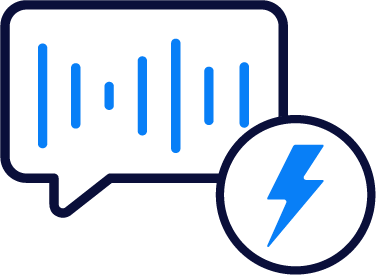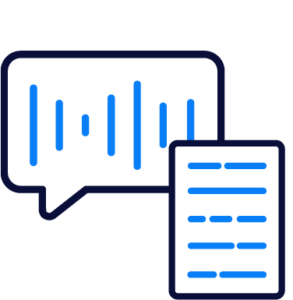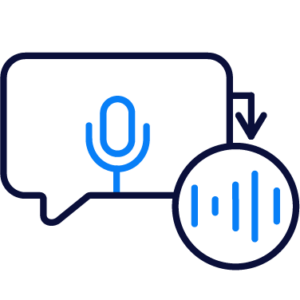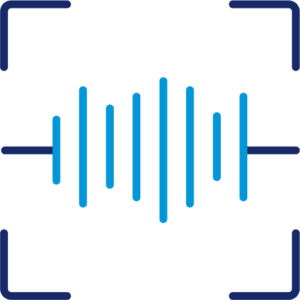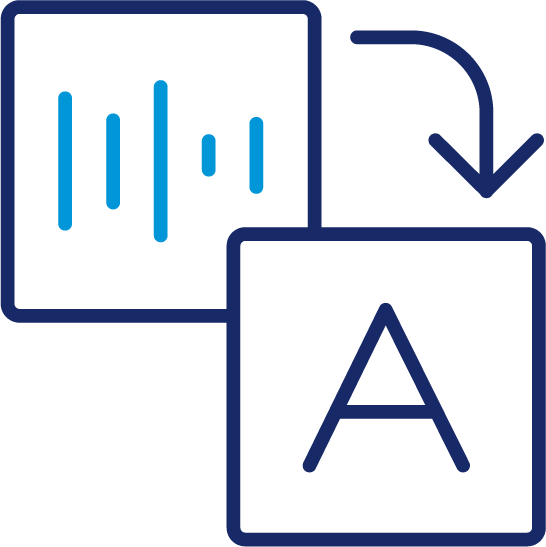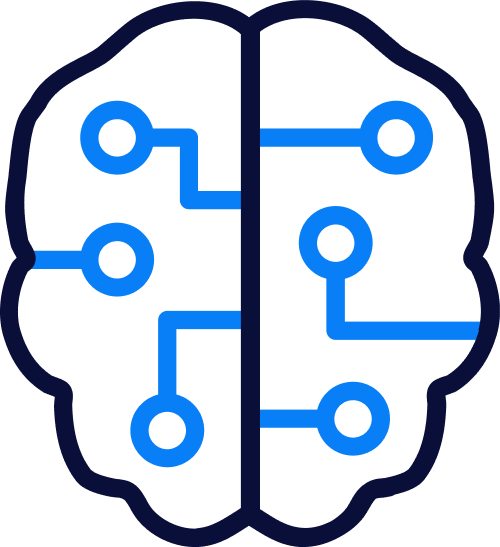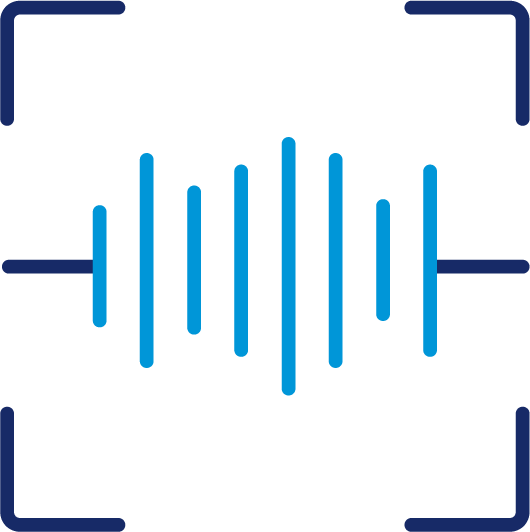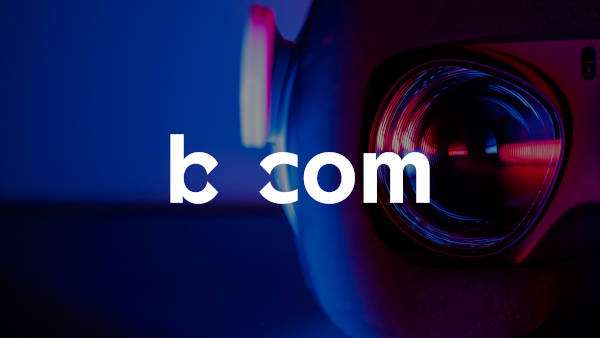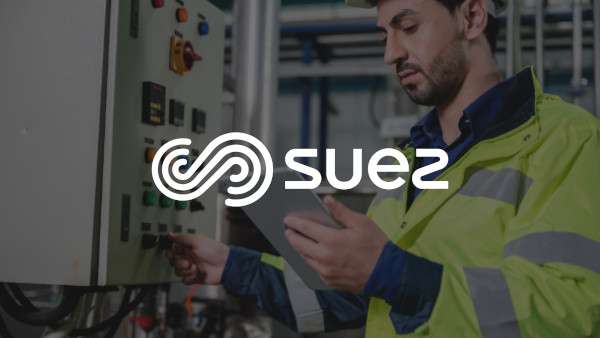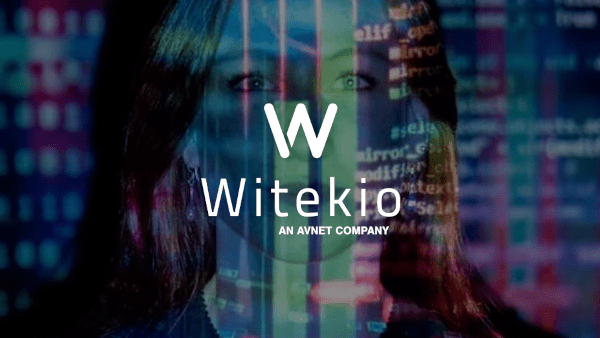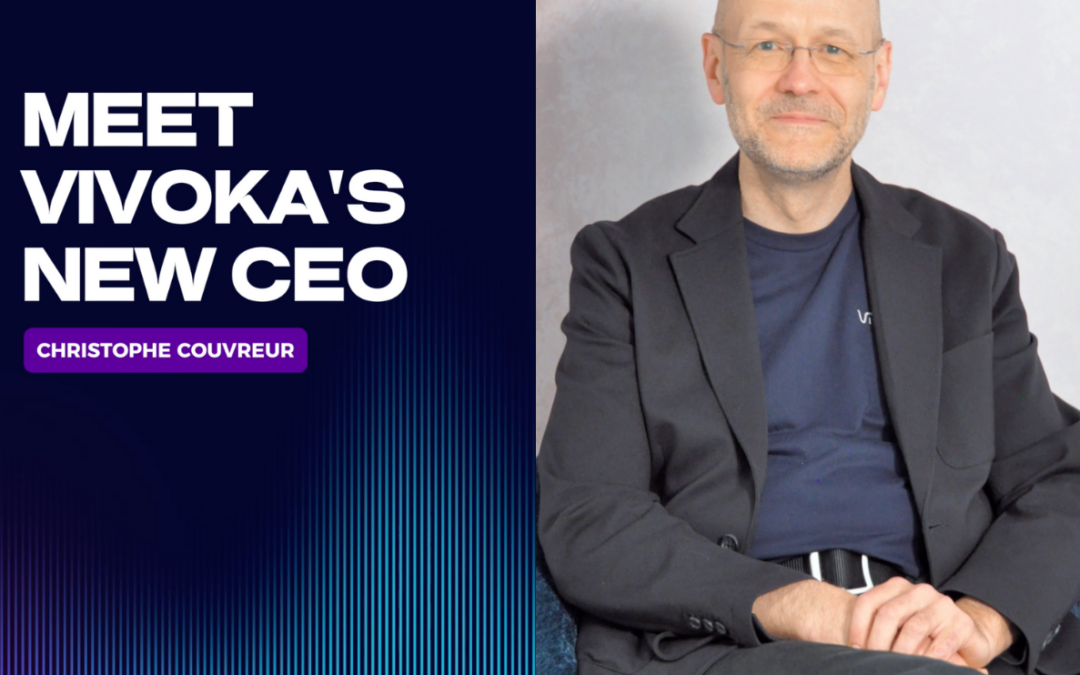
On-device voice commands in
AR Glasses
Vuzix decided to implement the VDK’s offline voice technologies to provide its users a 100% hands-free user experience wearing the smart glasses.
In a nutshell…
Vuzix is a leading company in the field of Augmented Reality (AR) glasses. With more than 20 years of experience they are providing many industries with vision-based features for a large range of use cases. In order to enhance the capabilities of their smart glasses, the company decided to develop embedded voice commands (with 30 languages covered) through the Voice Development Kit’s ASR.
Challenge & Requirements
Providing voice AI language support and reliability for Vuzix M-Series smart glasses
To enhance the vision capabilities of Vuzix M-Series Smart Glasses, voice commands was the natural choice to go with. Being a cognitive technology as well, voice follow the guidelines of the company strategy : innovation, ergonomics and user-value. Although, some requirements needed specific attention for Vuzix and its clients.
Extended language support
Vuzix, as an industry leader in AR glasses, has a worldwide reach. Granting complete language coverage is important, regardless of the areas, NA, EMEA, LATAM or APAC and also with different dialects and accents..
Reliable speech recognition service
The AR Smart Glasses are used by professional in industries like supply chains or healthcare. Sometimes, these areas are affected by specific environments that make it difficult to have perfect connectivity.
Solution & Specifications
Multilingual embedded Wake Word and Automatic Speech Recognition for smart augmented reality glasses
About the voice technologies
The Automatic Speech Recognition engine is based on Grammar to produce the voice commands and tailor the recognized words for industry-specific vocabulary. It also uses DCC (Dynamic Content Consumer) to have extended features flexibility while covering 30 languages, dialects and accents to fit with Vuzix’s worldwide reach.
Focus on the smart glasses' end-users
Vuzix AR Smart Glasses’ users come from very different areas, from supply chains and factories to laboratories and surgery clinics. Involved profiles are very heterogenous in terms of skills which is one of the reason to ease the use of AR features through voice interactions.
Information about the hardware
The AR Smart Glasses run on Android 9.0 OS and embed an 8 core 2,52GhZ Qualcomm XR1 processor to run the Vuzix OS that is equipped with the Voice SDK. With 6GB of LPDDR4 RAM and 64GB of internal flash memory, the voice technology footprint is seamless.
For developers, by developers
Try our voice solutions now
1
Sign up first on the Console
Before integrating with VDK, test our online playground: Vivoka Console.
2
Develop and test your use cases
Design, create and try all of your features.
3
Submit your project
Share your project and talk about it with our expert for real integration.
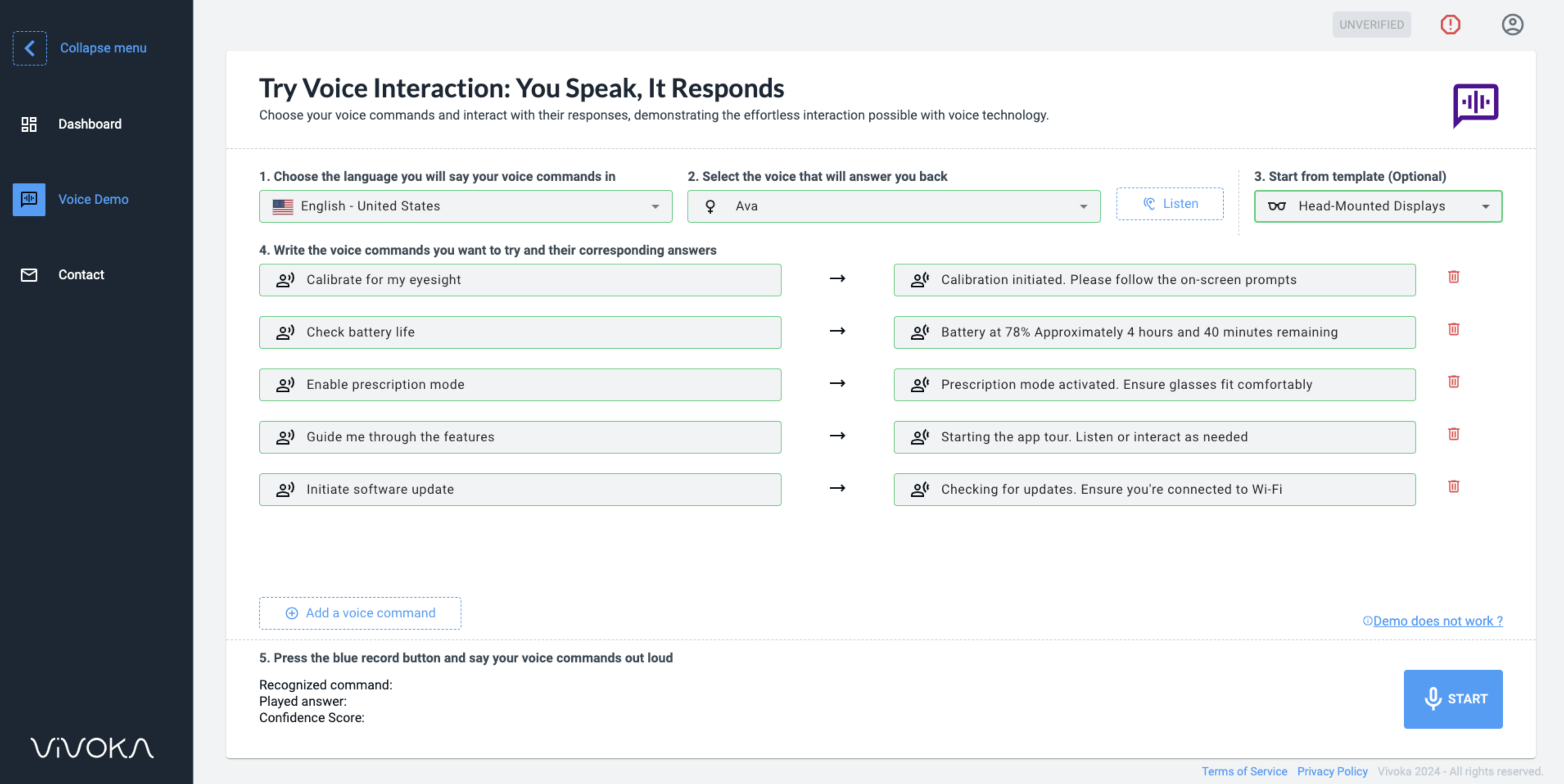
Product Demo
Discover the voice-enabled AR glasses in the use
In this video you will learn how the voice commands are used to navigate through the device’s interface. It’s important to remember that the voice input can be used in any application (from Vuzix or 3rd parties available in the marketplace).
Vuzix recently added a feature for accessibility that let the user say out loud numbers corresponding to navigation items.
Use cases and existing applications
Some of the use cases that are currently developed
Tele-Medecine
- “Show me instruction A1”
- “Start Recording”
- “Launch Video Feedback”
- “Monitor Vital Signs”
Warehouse Logistics
-
“Display Checklist B34”
-
“Start Video Recording”
-
“Validate Operation X345-43”
-
“Launch Automatic Scan”
Manufacturing
-
“Display Training Video 1”
-
“Start Visual Assistant for Product X”
-
“Show Product X Processes”
-
“Open Quality Check Form”
Field Services
-
“Connect me with the Support Team”
-
“Accept Vision Sharing”
-
“Display Remote Instructions”
-
“Validate Step 2”
Benefits and Improvements
What value does voice AI bring to Smart Glasses?
Hands-free interactions for safety
To comply with the need of touch interactions, voice technologies have been developed and integrated. Voice has the specific ability to be used hands-free, thus granting adding safety to worker in potentially hazardous areas.
Easy user device's onboarding
Voice technologies, recognition or synthesis, enhance the simplicity of a user getting to know the product and how to use it. Intuitive voice-based learning is the key to even the skill-gap between collaborators.
Faster features with voice commands
Voice commands are intuitive and faster to produce than traditional analog or touch interactions. Many available features in the Smart Glasses like recording or starting a call benefit from this added productivity.
Natural addition to vision features
Vision-based technologies are of the same nature than voice, the cognitive solutions area. Voice can seamlessly work along vision to produce breakthrough experiences for user that bring both value and ergonomics.
Bringing edge voice capabilities to connected AR Smart Glasses
We gathered AR Smart Glasses experts to discuss with our team about the close relationship between voice and vision technologies. We mashed the whole conversation inside a 30 minute long webinar that offers condensed insights, information and data provided by industry specialists.
Know more about the importance of Voice Control in the evolving world of AR
How Voice-Activated Smart Glasses Are Shaping the Future of Augmented Reality
In the rapidly evolving world of augmented reality (AR), the fusion of smart glasses with cutting-edge voice command technology is setting new standards for immersive experiences. Companies like Google and Meta are pushing the envelope with devices that not only support enhanced digital content through clear, durable lenses but also incorporate features such as virtual displays and video recording capabilities. These smart glasses offer a real-time view of the world, enriched with virtual overlays that provide workers in various industries—from healthcare to logistics—with vital information at a glance. With powerful on-device processing, users can enjoy seamless navigation and interaction without the need for constant phone connectivity.
The inclusion of a high-resolution camera, paired with ample battery life and intuitive controls, ensures that tasks such as reading instructions or capturing footage are effortlessly integrated into the wearer’s workflow. Additionally, these devices come at a competitive price point, making them accessible to a broader audience looking to explore or expand their use of AR technology. Whether it’s for professional use in field services or casual wear as sunglasses, these smart glasses promise a transformative way to learn, work, and explore the digital landscape.
How Smart Glasses with Voice Commands Are Transforming Professional and Personal Environments:
As AR technology advances, the integration of voice commands into smart glasses is enhancing user engagement and operational efficiency across multiple sectors. These devices, equipped with state-of-the-art screens and a robust support system, allow users to interact with content in unprecedented ways, making complex tasks simpler and more intuitive. Major players in the industry, such as Vuzix, are leveraging this technology to deliver products that offer a rich, hands-free user experience, tailored to the needs of professionals and everyday users alike.
The smart glasses are designed to work under various environmental conditions, ensuring reliability where connectivity might be compromised. This not only empowers users to perform better but also bridges the skill gap with easy-to-follow voice prompts and real-time visual assistance. As the market for AR devices expands, consumers will find an array of options that merge functionality with fashion, transforming ordinary eyewear into magical, high-tech tools that enrich how we view and interact with the world around us.
Testimonial from our client
“The broad language support capability of our products is a distinct competitive advantage for us across many foreign markets and we are happy to be working with a speech technology leader such as Vivoka to enable this. Moreover, many areas equipped with Vuzix Smart Glasses are affected by specific environments that make it difficult to have perfect connectivity for Cloud solutions and Vivoka’s solutions can run offline, on-device, to operate anywhere, anytime.”
Paul TRAVERS
Decision-Making
Why did Vuzix choose the Voice Development Kit?
Clear pricing models
Voice Development Kit’s technologies are working on business models that makes the innovation’s cost seamless and measurable for companies.
Technology's simplicity
With a no-code prototyping interface, the VDK Studio is the perfect tool to get a hand on voice technologies and create great solutions without specific skills.
Data privacy
Being on-device, Vivoka’s technologies work anytime, anywhere, to provide users with non-stop service availability and complete data privacy. This requirement is even more important when working with individuals.
Technical compatibility
Vivoka’s low-footprint solutions can run on most frameworks and hardwares, from mobile applications on Android to embedded systems with Linux…
Adopting voice solutions in your business starts here
Get in touch with our team to shift your company in the Voice First world! Or try it now!
Powered by the Voice Development Kit
Innovative use cases developed with the VDK
It's always the right time to learn more about voice technologies and their applications
NLU vs Strict Commands: spot the differences!
Automatic Speech Recognition (ASR) technology has transformed the way humans interact with machines, revolutionizing the artificial intelligence (AI) market by adding greater nuance and depth to...

